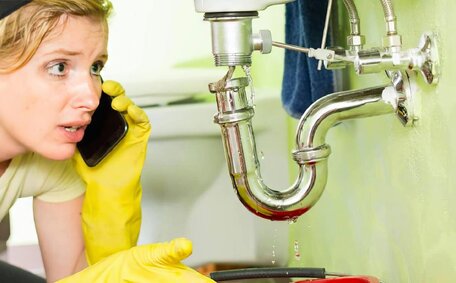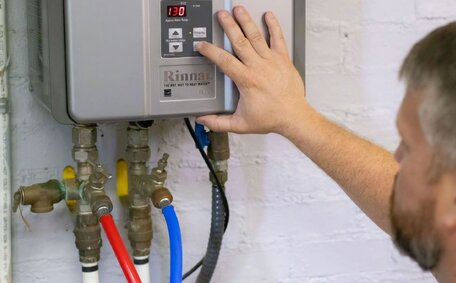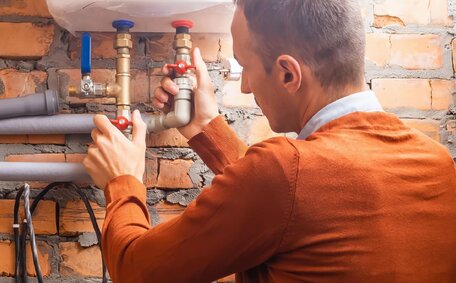Understanding Your Hot Water System and Thermostat
Hot water systems heat water for household use, storing it in tanks or delivering it on-demand. They consist of water heaters or boilers connected to a storage tank or continuous flow unit. Thermostats are vital for maintaining the desired water temperature.
There are a few common types of hot water systems:
- Gas and electric storage tank systems maintain heated water in well-insulated containers. The thermostat controls the heating elements to maintain the set temperature.
- Gas continuous flow or instantaneous systems heat water on demand instead of storing hot water. The thermostat regulates the gas burner based on the water flow and temperature selected.
- Electric continuous flow units work similarly except with electric heating elements instead of a gas burner.
A thermostat setting of 60 degrees Celsius provides a balance between energy efficiency and the prevention of bacteria like Legionella. Turning off the booster function saves a considerable amount of energy your hot water system might otherwise use during warmer months.
Old or faulty thermostats cause systems to overwork and overheat water past the optimum 60°C. Upgrading to a modern digital thermostat gives you greater control over accurate temperatures.
How Thermostats Affect Efficiency
The thermostat is crucial for managing the efficiency of your hot water system. Incorrect thermostat settings can cause your system to consume excess energy by overheating the water. Given that water heating accounts for 21% of home energy use, optimising your thermostat settings is key to achieving significant savings.
A thermostat setting within the 55°C to 60°C range is ideal; temperatures exceeding this lead to marked standby heat losses without additional benefits. For example, heating water to 70°C rather than the optimal 60°C can increase heat loss by as much as 30%.
Experiment with lowering your thermostat by 5°C. If water temperature remains adequate, such adjustments could trim your energy bills by at least 10%.
Setting the Optimal Temperature
For optimal efficiency without compromising health safety, thermostats should be set between 55-60°C. The U.S Consumer Product Safety Commission recommends settings below 48.9°C (120°F) to prevent scalding accidents. However, with proper maintenance you might able to adjust it safely below 60°C without risking Legionella bacteria growth.
Set your storage tank heater in the bracket of 55-60°C. Heating beyond 65°C leads to unnecessary energy consumption. Lower by 5°C and test for sufficient warmth.
For continuous flow systems, a 50°C setting often provides adequate hot water while maximising efficiency. However, you may need to experiment with slightly higher temperatures depending on your household usage.
Gradually reduce the temperature by 5°C increments and insulate pipes to minimise standby heat loss. Switch to a digital thermostat for precise adjustment between 55-60°C.
Preventing Heat Loss Through Insulation
Installing insulation around your hot water system and pipes is an effective way to reduce standby heat losses and save energy. Outdoor systems can lose significant heat, up to three kilowatt-hours daily, without proper insulation.
For home insulation, install R-value 3 pipe wrap, securing it with zip ties or tape for a snug fit. For thorough coverage, professional installation of superior insulation, such as polyethylene foam sleeves, is recommended.
Insulate both your hot water system and cold water pipes to prevent condensation buildup leading to corrosion. Maintain air gaps around flues and valves for safety.
Switching to a well-insulated continuous flow system can cut heat loss substantially compared to an older storage tank model. However insulation remains vital to conserve energy.
Complement insulation by setting your thermostat to a modestly lower level during colder periods and deactivating boost functions in warmer times to minimise standby heat losses.
Maintaining Your System
Consistent maintenance guarantees efficacy and durability, ensuring maximal energy utilisation. While storage tanks typically last 5-8 years, contemporary continuous flow units can exceed 15 years, albeit with regular servicing.
Perform biannual checks by releasing your pressure relief valve to avoid buildup. Annually, have a licenced technician inspect your system to identify faults early.
For storage tanks, replace anodes every 4-5 years to prevent corrosion. Descale heating elements and drain sediment from the bottom annually.
For continuous flow systems, clean inlet filters and maintain clear airflow around the unit. Keep the external case clean.
Replacing storage tank systems that are more than eight years old with modern continuous flow units can significantly enhance efficiency. We offer discounts on upgrades.
Upgrading Old or Inefficient Systems
If your hot water system is over 8 years old, consider upgrading to a modern energy efficient model. New continuous flow units can reduce water heating bills by 30-50% while lasting over 15 years.
Be vigilant for indicators that your current system requires replacement, such as rising energy bills, diminishing hot water supply, and recurring part breakdowns. Sediment accumulation and part corrosion especially render old storage tank systems inefficient within 5-8 years.
We recommend upgrading old storage tank units over 8 years unless recently serviced and maintained. New heat pump or gas continuous flow systems heat water instantly in compact wall-mounted units, slashing standby losses.
Contact our Ashfield plumbing team to arrange an obligation-free upgrade assessment. We offer discounts on continuous flow system installations. Replacing inefficient systems also qualifies for STC rebates offsetting nearly a third of upgrade costs.
Incorporating Water Efficiency Measures
Beyond thermostat management, adopting water efficiency practices can additionally decrease the demand for hot water. This lowers the amount energy used, saving you additional money on bills.
simple upgrades such as fitting low-flow showerheads and faucet aerators curb water flow without sacrificing pressure. New showerheads use around 7 litres per minute compared to traditional models using up to 20 litres per minute.
Switching from a single high-flow to a low-flow showerhead can save as much as $100 annually. Multiply across all household showers and tap aerators for even greater savings.
Choose water-efficient fixtures and machines for kitchen and bathroom makeovers. Appliances rated 4 stars or above employ cutting-edge tech to slash water usage.
Fixing leaks early also reduces wasted water demand. A small hot water pipe leak wastes over 500 litres per month. Our technicians can locate and repair leaks promptly.
Visit our online store to purchase water efficient products or contact us to install them affordably. Combined with better thermostat management, such measures create substantial savings on water heating.
Monitoring and Adjusting Periodically
It’s important to monitor and periodically adjust your hot water system’s thermostat to maintain optimal efficiency. Factors like changing seasons and shifting usage patterns can affect performance over time.
During summer or times of low occupancy, when less hot water is used, adjust the thermostat downwards to prevent wasteful over-heating. By trimming the thermostat by 5-10°C, you could net significant savings while maintaining comfort levels.
In contrast, during winter or periods of high demand, you might need to increase temperature by 5-10°C if the system’s output is insufficient. Monitor pressure and temperature indicators for signs of system stress.
Examine the access panel; if it’s too hot to handle, this suggests that the unit is operating at an unwarranted intensity, increasing the risk of malfunction or accidents.
Notice leaks immediately and have them repaired as the additional hot water demand wastes energy.
Installing contemporary thermostats offers granular monitoring and automated adjustments for changing conditions, ensuring top efficiency.
Although typically 'set-and-forget’, sporadic tweaks in line with usage patterns preserve your system’s efficiency and lifespan. For advice on the best settings for your system, you can always consult our skilled technicians.






